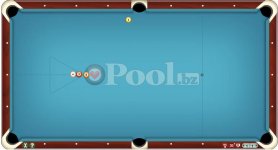Last night I was playing a friend and this situation came up:
3 balls left on the table, the cueball is frozen to one of them, and the other two are uptable; untouchable without some kind of Hail Mary kick shot. Basically, I was hosed.
My friend asked if I could just "sweep the balls, rearranging the whole table."
I said, "that would definitely be unsportsmanlike conduct, but I don't know what the punishment would be."
Looking at the WPA rules, I think the answer is the same as 3-fouls... I would lose 15 points, we re-rack the balls, and I have to shoot as per opening-break rules.
Is that correct?
-matthew
("atrocious" does not suitably describe how badly I played last night, but at least I got to play instead of just solitary practice)
3 balls left on the table, the cueball is frozen to one of them, and the other two are uptable; untouchable without some kind of Hail Mary kick shot. Basically, I was hosed.
My friend asked if I could just "sweep the balls, rearranging the whole table."
I said, "that would definitely be unsportsmanlike conduct, but I don't know what the punishment would be."
Looking at the WPA rules, I think the answer is the same as 3-fouls... I would lose 15 points, we re-rack the balls, and I have to shoot as per opening-break rules.
Is that correct?
-matthew
("atrocious" does not suitably describe how badly I played last night, but at least I got to play instead of just solitary practice)
